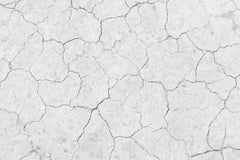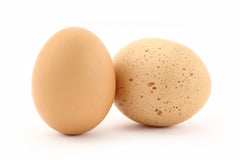Article Summary
- Know thyself (and thy skin) for more effective, less frustrating skincare
- At-home test to determine your skin type: oily, dry, combo, or normal
- Learn your skin conditions and proclivities and how to address them
For me, the most difficult part of building a good skincare routine was actually listening to my skin. I’d get so starry-eyed over rave reviews that I’d buy a product and slather it on my face without considering whether it would work for me, specifically.
Everyone’s skin is different, and the best way to get the healthiest, happiest skin possible is to A) know what your skin wants and needs, and B) skip the stuff that’s meant for other kinds of skin. This post is meant to help you figure out your unique skin so you can refine your skincare routine and know what to look for – and what to avoid.
I’ve broken it up into three categories: skin types, proclivities, and conditions. These are my own categorizations that I’ve tweaked slightly from traditional designations. There are a lot of ways to think about skin; this is just one that makes sense to me.
What are skin types, proclivities, and conditions?
The way I see it, there are three factors at play when thinking about your skin’s wants and needs.
Type: this is intrinsic to how your skin fundamentally is. This is like eye color or height; it doesn’t matter what you put on your skin, it’ll still be the same fundamental skin type underneath. (Technically, it can change with factors like age, hormones, illness, medication, etc., but for the sake of simplicity, let’s pretend it’s permanent.)
Proclivities: what your skin is prone to; that is, skin afflictions you get more easily or often than the average person. This is different from skin type, because while you may be prone to an affliction, the affliction is not a part of you. You might, say, get more ear infections than the normal person, but that doesn’t mean you are a fundamentally infected person.
Conditions: these are temporary states that are currently affecting your skin. Your skin’s type or proclivities might make you more susceptible to these conditions, but fundamentally, these are things that can be completely addressed and fixed.
Skin Types: Dry, Oily, and Combination
These are the basic, unchangeable states of your skin. You can (and should!) adapt your skincare routine based on your skin type, but your routine won’t change your skin type.
Skin Type 1: Dry

What is it?
How can I tell if I have it?
Dry skin often feels tight, flaky, or itchy. If you wash your face and don’t apply any products, after a couple of hours your skin will feel dry or tight instead of oily.
What should I do about it?
- Gentle, non-foaming cleansers that remove as little of your skin’s sebum as possible
- Facial oils, to help augment your natural oils
- Heavier, more occlusive creams that lock moisture into your skin and prevent it from evaporating
Skin Type 2: Oily

What is it?
It’s the opposite of dry skin, essentially – oily skin over-produces sebum. Fun fact: P. acnes, the bacteria that causes acne, eats sebum as its main fuel source, which is why oily-skinned folks are more prone to acne.
How can I tell if I have it?
If you wash your face and don’t put on any products, your skin will feel oily and shiny within a couple of hours. Be aware, though, that in some cases, people assume they have an oily skin type when they actually have a dehydrated skin condition, and their oiliness can actually be treated and managed.
What should I do about it?
- Low-pH foaming cleansers (high-pH products give a better environment for acne-causing bacteria to flourish)
- Water-based serums and gels to add moisture to your skin without adding oil
- Translucent powders that soak up oil throughout the day – finish your skincare routine with a dusting of powder to reduce shine
Skin Type 3: Combination (Seasonal)
What is it?
There are two types of combination skin. If you have seasonal combo skin, your skin type is dry in the cold months and oily in the warm months.
How can I tell if I have it?
If the “wash your face and leave it for two hours” test gives you different results in January than it does in July, you’re probably a seasonal combo type.
What should I do about it?
Skin Type 4: Combination (Same Face)

What is it?
This is what people think of when you say “combination skin”. This type of skin is oily in certain places (typically the forehead, nose, and maybe chin) and dry in others (typically the cheeks and jawline).
How can I tell if I have it?
If your face doesn’t react uniformly to the “wash and wait” test – that is, if you get oily in some places and tight in others – you’re probably same-face combo.
Once again, though, the skin condition of dehydration is often misinterpreted as the skin type of combination. Dehydration can cause skin that’s simultaneously dry and oily thanks to a damaged moisture barrier. If you think you have combo skin, check out the section on dehydration below and see if it sounds accurate to your skin.
What should I do about it?
Skin Type 5: Normal

What is it?
Your skin produces just the right amount of sebum all over your face.
How can I tell if I have it?
Your skin rarely feels either tight or greasy. Your skin doesn’t flake off, nor does it get shiny by the end of the day. The clouds part and the sun shines bright when you step outside. Small woodland creatures help you get dressed in the morning.
What should I do about it?
Skin Proclivities: Sensitivity, Pigmentation, Wrinkles
Skin proclivities are different from skin type in that they’re things your skin is prone to, rather than a fundamental state of being. If you’re more likely to get crow’s feet than the average person, for example, you have a proclivity to wrinkles.
Skin Proclivity 1: Sensitivity

What is it?
You have sensitive skin if your skin is more prone than most to an irritation or inflammation response. It can arise when you use products with triggers like alcohol, fragrance, extremely high or low pH, or certain plant extracts; when you use ingredients you have a specific sensitivity or allergy to; or when you physically overstimulate your skin by rubbing, exfoliating, or tugging at it.
How can I tell if I have it?
There are two types of sensitivity: irritation (which usually manifests as redness, stinging, small painless bumps, or discomfort to touch) and allergy (which manifests as swelling, heat, itching, or rashes). If you get either of those responses frequently, or if products that most people can use without issue cause an irritation or allergy response in your skin, you may have a proclivity to sensitivity.
What should I do about it?
- Dehydrated skin can cause sensitivity, since your skin’s defenses aren’t operating at full capacity. See the section on dehydrated skin below for more info.
- Rosacea is condition that causes redness and flushing in response to certain triggers like exercise, alcohol, spicy foods, etc. If your face is excessively prone to getting hot, red, and flushed, see a dermatologist – there are some great ways to manage rosacea, like avoiding triggers and using gentle, soothing skincare products.
- General sensitivity is not a medical term, but it’s how I think of skin that is otherwise healthy but just generally sensitive to most things. Treat this skin gingerly (definitely skip the physical exfoliants like scrubs!). Look for products like gentle, non-foaming cleansers and simple moisturizers. Be careful and intentional about using AHAs, BHAs, clay masks, and other harsher products.
- Specific sensitivity is, again, not a real medical term, but it means you have a sensitivity or allergy to a specific ingredient. This one’s pretty easy to solve! If you find yourself reacting to certain products, look at the ingredients lists for all the products you’ve had the same bad reaction to and find the common ingredient(s), then do your best to avoid them in future products.
Skin Proclivity 2: Pigmentation

What is it?
Certain skin types are more likely to overproduce melanin. This can range from tanning or darkening easily in the sun, to post-inflammatory hyperpigmentation from acne.
How can I tell if I have it?
A proclivity for pigmentation is more likely in people with darker skin. If you tan easily, if your pimples leave tan/brown/black marks for several months after they heal, or if you get pigmentation marks like sun spots, this is probably your proclivity.
What should I do about it?
Skin Proclivity 3: Wrinkles

What is it?
Certain skin types are more likely to develop fine lines and wrinkles. Unlike pigmentation, this time it’s lighter-skinned people who are more prone to wrinkling. Of course, we all get older and our skin begins to sag; this proclivity is just about how quickly and easily that happens to your skin.
How can I tell if I have it?
If you notice your skin is forming wrinkles or losing elasticity faster than others your age, you may be wrinkle-prone.
What should I do about it?
Skin Conditions: Dehydration, Acne
Skin Condition 1: Dehydration

What is it?
Your skin’s outermost layer, the stratum corneum, has a bricks-and-mortar structure. The bricks are long, flat skin cells called corneocytes, and the mortar is a fatty mixture made up of ceramides, cholesterol, and fatty acids.
That fatty mixture keeps your skin waterproof, strong, and healthy, and serves as a barrier keeping the outsides outside and your insides inside. If that barrier is damaged, we call it dehydrated skin, and it causes a lot of bad things.
How can I tell if I have it?
- Skin that’s simultaneously dry/flaky (since your skin’s moisture is evaporating out the damaged barrier) and oily (since your skin overproduces oil to try to seal up your skin)
- Significant sensitivity – your skin gets red to the touch and even the most gentle moisturizers sting
- Wrinkles in places they wouldn’t form from facial expressions – for example, you might have fine lines around your eyes that aren’t laugh lines
- Prone to breakouts (since your skin’s defense systems aren’t operating at full capacity)
What should I do about it?
- Using high-pH cleansers
- Too much exfoliation, both chemical (AHAs, BHAs, retinoids, etc.) and physical (scrubs, washcloths, etc.)
- Sun damage
- Harsh ingredients like denatured alcohol (the kind that smells like vodka), clay masks, and fragrance
- Supplement your moisture barrier with ceramides, cholesterol, and fatty acids
- Stop all exfoliation
- Use gentle, low-pH cleansers
- Pair a gentle, water-based hydrating toner or serum with a thick, occlusive cream to lock in the moisture
Skin Condition 2: Acne
What is it?
- Excessive sebum production (i.e. your skin makes too much oil)
- Hyperkeratinization (where dead skin cells don’t slough off naturally and clog up your pores)
- P. acnes bacteria moving in and feasting on your sebum
- Inflammation of the hair follicle and surrounding skin
- Closed comedones: small, painless, hard, flesh-colored bumps
- Open comedones (blackheads): painless, hard, dark brown or black bumps
- Papules: what you think of as a pimple, without a white pus-filled center
- Pustules: what you think of as a pimple, with a white pus-filled center
- Nodule/Cyst: a hard, inflamed, very painful lump under the skin, with or without a white pus-filled center
How can I tell if I have it?
You probably know if you have acne. Although, one thing to keep in mind: rosacea can sometimes be mistaken for acne, since it’s often accompanied by pimples, but rosacea only includes papules/pustules, not comedones, which are acne-specific.
What should I do about it?






